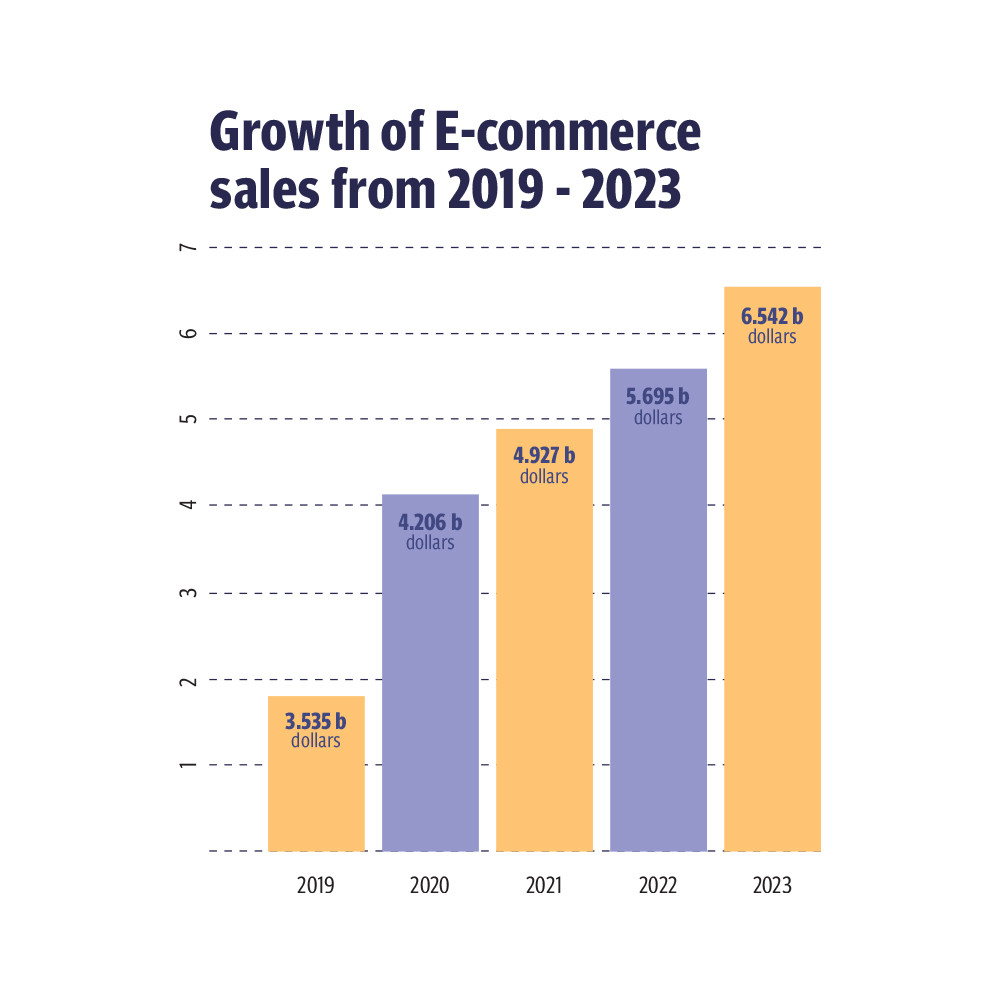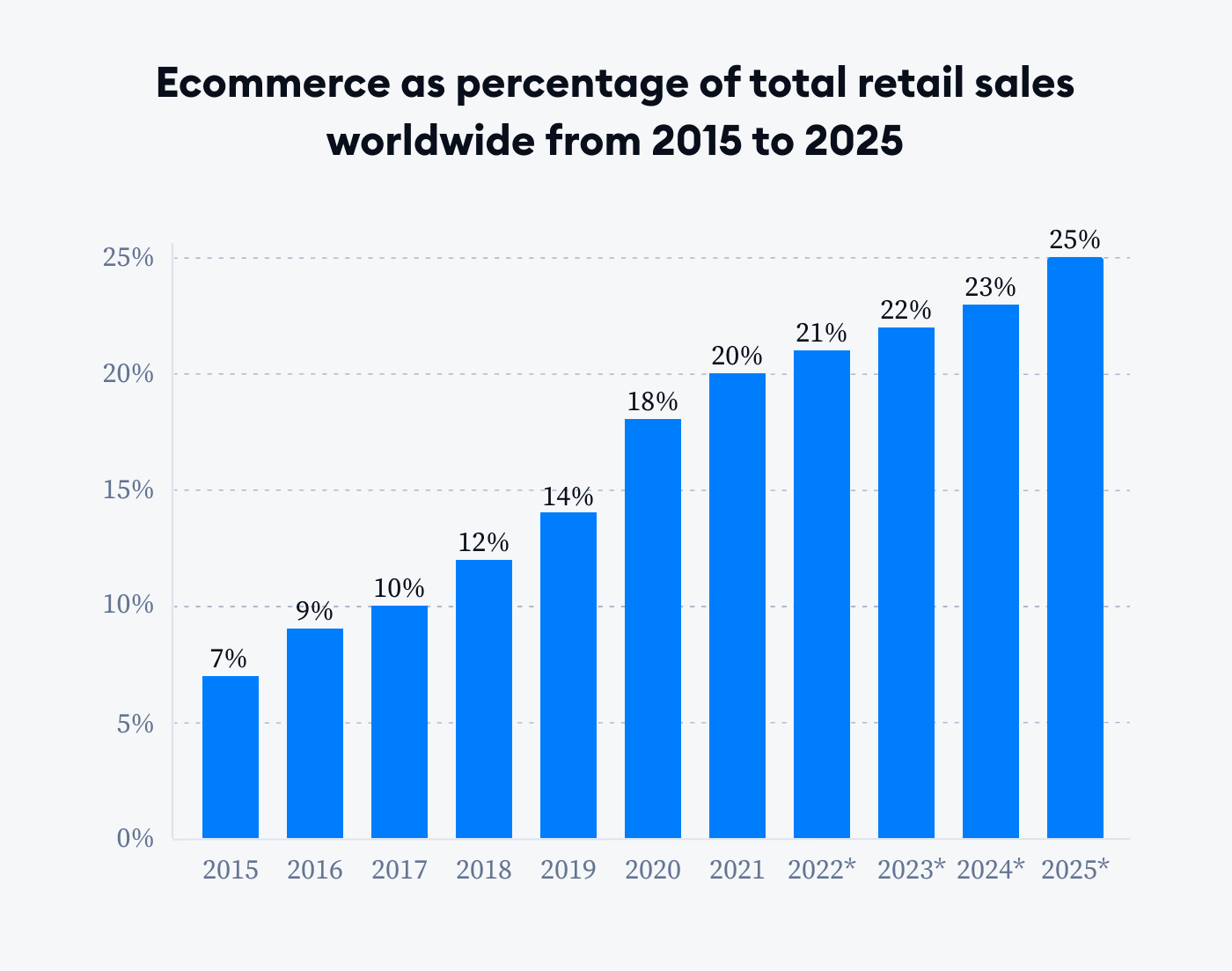Navigating E-Commerce Growth Trends: Insights For 2025

The e-commerce landscape is rapidly evolving, making it essential for businesses to stay ahead of the curve. As we look toward 2025, understanding e-commerce growth trends will be vital for success in the digital marketplace. This guide explores current trends, driving factors, challenges, and future predictions, equipping businesses with the insights needed to thrive.

Current Trends in E-commerce (2025)
E-commerce continues to reshape how consumers shop and businesses operate. Here are some key trends to watch in 2025:
Rise of Mobile Commerce
Mobile commerce is expected to dominate online shopping. With smartphones being ubiquitous, more consumers are making purchases through mobile apps and websites. According to Statista, mobile commerce is projected to account for nearly 73% of total e-commerce sales by 2025.
Social Commerce Integration
Social media platforms are becoming significant sales channels. Brands are leveraging social commerce to engage customers directly within platforms like Instagram and Facebook. This trend enhances consumer experience by providing seamless purchasing options.
Personalization and Customer Experience
Consumers now expect personalized shopping experiences. E-commerce platforms are utilizing data analytics to tailor product recommendations and marketing messages. For instance, Amazon's recommendation engine significantly boosts sales through personalized suggestions.
Factors Driving E-commerce Growth
Understanding what drives e-commerce growth can help businesses strategize effectively. Here are some critical factors:

Technology Advancements
Innovations in technology are making online shopping more efficient. Advanced payment systems, AI-driven chatbots, and augmented reality (AR) tools are enhancing customer experience. For example, AR apps allow customers to visualize products in their environment before purchasing.
Changing Consumer Behavior
Shifts in consumer behavior, especially post-pandemic, have accelerated e-commerce growth. More people prefer online shopping due to its convenience and safety. According to eMarketer, U.S. e-commerce sales are expected to surpass $1 trillion in 2025, driven by these changes.
Increased Internet Penetration
As internet access expands globally, more consumers are entering the digital shopping space. Developing countries are experiencing rapid growth in e-commerce adoption due to better internet connectivity and mobile access.
Challenges in E-commerce
While opportunities abound, e-commerce businesses face several challenges:
Logistics and Supply Chain Issues
Managing logistics remains a significant hurdle. Businesses must ensure timely delivery while keeping costs low. The rise in online orders can strain supply chains, leading to delays and customer dissatisfaction.
Regulatory Compliance
E-commerce companies must navigate a complex landscape of regulations. This includes data protection laws and tax compliance, which can vary by region. Failure to comply can result in hefty fines and damage to brand reputation.

Competition and Market Saturation
With the growth of e-commerce, competition is fierce. New entrants continuously emerge, making it essential for established brands to innovate and differentiate themselves. A strong online presence and effective marketing strategies are vital to stand out.
Future Predictions for E-commerce
As we approach 2025, several predictions can be made regarding the future of e-commerce:
Increased Focus on Sustainability
Consumers are becoming more environmentally conscious. Brands that prioritize sustainability in their practices are likely to attract more customers. This includes eco-friendly packaging and transparent supply chains.
Expansion of Omnichannel Retailing
The future of retail will be omnichannel, blending online and offline experiences. Businesses will need to create seamless shopping experiences across all channels. An example is how Walmart integrates its physical stores with its online platform.
Growth of Subscription Services
Subscription models are gaining traction, offering consumers convenience and value. Companies like Dollar Shave Club and Birchbox have successfully leveraged this model, providing curated products directly to consumers on a regular basis.
Conclusion
In conclusion, understanding e-commerce growth trends is crucial for businesses aiming to thrive in the competitive digital marketplace. From mobile commerce and social integration to logistical challenges and sustainability efforts, staying informed will help businesses navigate the complexities of e-commerce in 2025. As you prepare for the future, consider how these insights can shape your strategies. Embrace these trends, and position your business for success in the evolving e-commerce landscape.
Call to Action
Are you ready to adapt your business strategy to align with these e-commerce growth trends? Stay ahead of the competition by implementing the insights from this guide today!